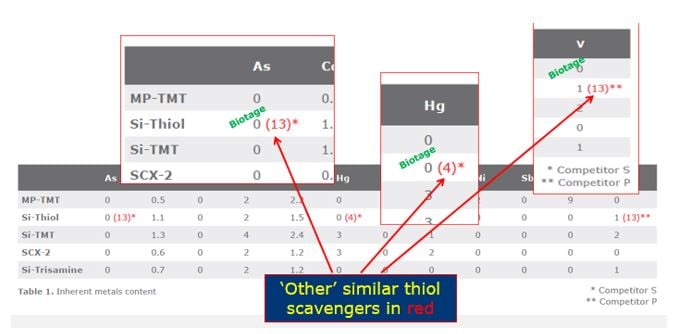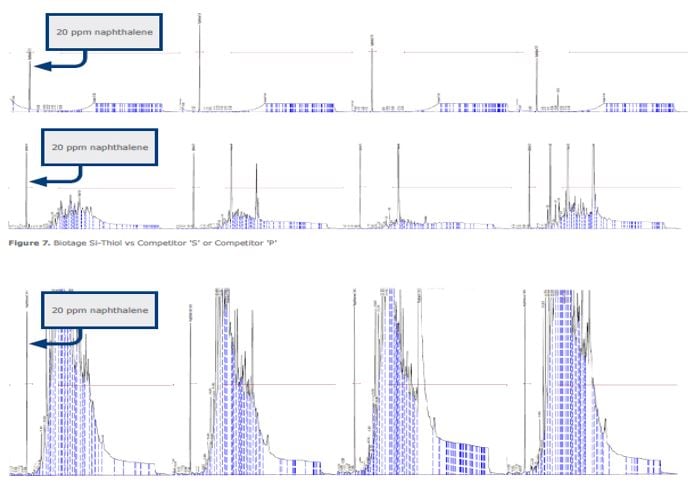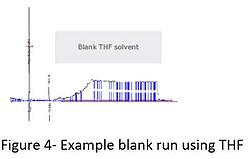Biotage metal scavengers are widely proven and adopted solutions for the removal of metals such as palladium, from chemical products such as APIs and used in industry thousands of times, the world over for over 20 years. However, there are other (inferior to our ears) metal scavengers that have been put onto the market by others that have confused, given inconsistent results and weakened process robustness in pharmaceutical applications.
This is part of our ‘all metal scavengers are not the same’ series and in this blog I wanted to share more information relating to how the landscape for metal scavengers has changed and highlight a few of the pitfalls.
At Biotage, when we design metal scavengers our goals are simple, to provide a solution to the growing regulatory requirement of purer and purer output compounds, such as APIs and final products in pharma. This was in support of the growing needs and development of regulatory frameworks such as ICH Q3D, which focusses on limits for metals in APIs, drug products and excipients. Also very important is control of extractables and leachables. So, when we received questions from our clients and prospective clients about reliability of metal scavengers as workflow steps, we suspected that they may have had some previous ‘bad experiences’ with some of the other materials on the market and we decided to look into this more.
In a scientific study, we compared three 'Si-Thiol' products (Figure 1). One of these was the original trusted ISOLUTE® Si-Thiol from Biotage (Figure 1) and the other two, well, ….. were not.

There is very little ‘subjective’ chemistry in this study on purpose - we wanted to be as objective as possible. First, metal scavengers were used as received from various suppliers without modification. In the second part of our study, we performed standard solvent extractions of a known mass of metal scavenger with each of 4 different solvents (MeOH, DCM, THF and ethyl acetate) to understand what, if anything could be leaching out of them while they are in use.
In part 1, we looked at metals – in particular the question ‘does the metal scavenger come preloaded with any bad (aka native metals) itself?’. After all, these materials are sold as metal scavengers, so they should be clean and metal free (or as low as permitted by regulatory limits) to start with (Figure 2).

Figure 2 –From ICP analysis, this shows that other Si-Thiol metal scavengers contained small amounts of class I metals such as mercury, arsenic and others such as vanadium. ISOLUTE® Si-Thiol from Biotage on the other hand had zero / BDL quantities (below detectable limits) of metals of concern.
We have previously stated that Biotage metal scavengers are very clean and reliable, and although those are simple easy phrases for any potential supplier to throw around, Biotage statements have been derived from numerous laboratory studies and production development programs, such as these.
Biotage ISOLUTE® Si-Thiol had the lowest and cleanest metals profile in the group of tested Si-Thiol metal scavengers from a variety of sources. All Biotage metal scavengers were demonstrably ‘clean’ by ppm standards and therefore should not pose any real QA red flags when taken in the content of the overall ICH Q3D risk assessment process, however the same could not be said about the other two Si-Thiols in the study.
We looked at one of those other scavengers in more detail. One had (unacceptable) levels of arsenic and mercury and considering that it was supposed to be a metal scavenger, this finding was even more significant. We also noted higher levels of vanadium and although not usually a constituent of production processes for silica, vanadium can be an indicator of poor manufacturing reactor maintenance, as vanadium is a component in many stainless steels.
Our second experiment was based on classic E/L (extractables / leachable) studies. In this form, we simply took std identical masses of metal scavenger and extracted them in each of 4 different solvents (ethyl acetate, methanol, tetrahydrofuran, dichloromethane). Then add an internal std and compare the resulting GC analyses (Figure 3).

Figure 3 – Solvent extractables analysis from a variety of different sources of Si-Thiol and in 4 key organic solvents. Solvents used are in order (left column to right column, EtOAc, MeOH, THF, DCM). Biotage Si-Thiol is the top row, other sourced Thiol scavengers shown in second and third row.
Again ISOLUTE® Si-Thiol for Biotage was cleanest. Other Si-Thiols contained large amounts of an unidentifiable impurity profile, which would likely be released into a reactor / API scavenge if used on large-scale. Biotage scavenger extracts looked very similar to the control experiment based on ‘blank fresh’ solvent (Figure 4) and almost an order of magnitude lower than the 20ppm internal standard we added, again, essentially clean and certainly nothing to be concerned about.

Fortunately, the years of polymer and chemistry expertise and know-how that Biotage has invested in designing and manufacturing metal scavengers for large scale is clearly evident in the data. We believe that someone using a metal scavenger, should be able to get quality results, everytime.
The other two Si-Thiol products were surprising(ly bad) in terms of their native metal content. If you have even seen unusual levels of arsenic or mercury in your products it’s possible the root cause could have been one of these alternative lesser thiol scavengers. Similarly, the presence of vanadium is usually the result of a manufacturer not paying enough attention to reactor maintenance and upkeep - we use industry standard glass lined steel reactors at Biotage.
In terms of writing a conclusion to this blog, I was in two minds, no one likes an unsolicited advert, however we respect and value the science, which has to come first. It was very clear that some of the scavenger alternatives we tested were very dirty and would create a serious (and variable) risk to the impurity profile of an API, if used. So, while there may be other Si-Thiols out there, from the perspective of the expectations of a professional pharma client these alternatives will almost certainly not be reasonable and can offer nothing more than a false economy on paper.
Time after time that’s why Biotage clients chose the best palladium scavenging work-horse in the business, ISOLUTE® Si-Thiol.
Read our other blog posts to learn more about metal scavenging, just follow the link below!

 Organic Workflow
Organic Workflow Peptide Workflow
Peptide Workflow Scale-Up Flash Purification
Scale-Up Flash Purification  Sample Preparation
Sample Preparation Biomolecule Purification
Biomolecule Purification Oligo synthesis
Oligo synthesis Scavengers and Reagents
Scavengers and Reagents Service & Support
Service & Support Accessories & Spare parts
Accessories & Spare parts Investors
Investors Reports & News
Reports & News The Share
The Share Corporate Governance
Corporate Governance Calendar
Calendar Sustainability
Sustainability Our Offering
Our Offering Our History
Our History Our Locations
Our Locations Leadership
Leadership